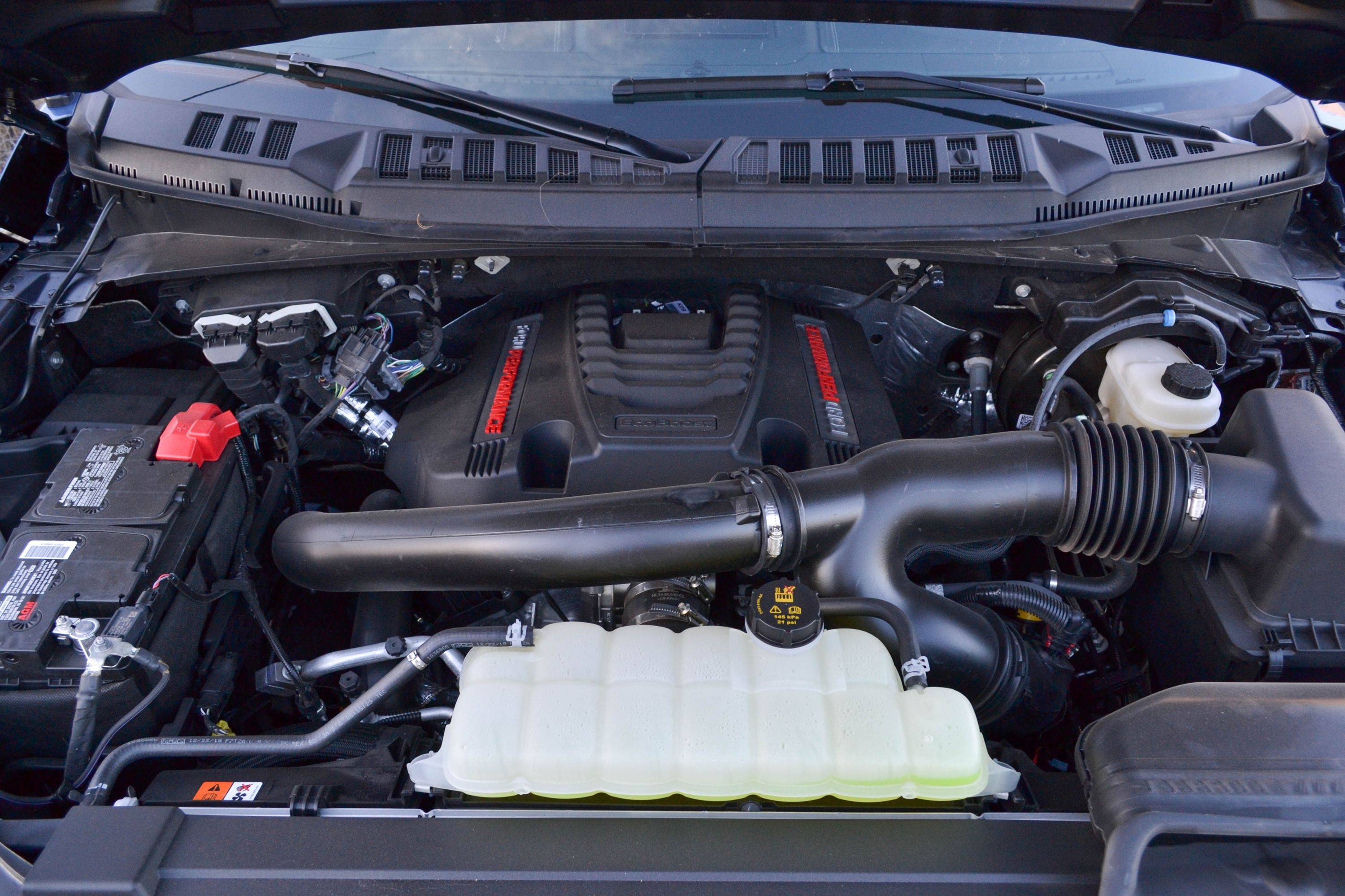
Ford has devised a simple method to get rid of condensation which may form in a turbocharged engine's intercooler under certain ambient conditions. According to a patent found by CarBuzz at the United States Patent and Trademark Office (USPTO), the solution to this problem can be found in a fluid level sensor and some clever engine control programming.
You may never have even been aware that such a problem exists, but in reality, the unintended introduction of some water along with the intake air happens more often than you'd imagine. Air-to-water and top-mount air-to-air intercoolers are most affected by this problem because they are typically mounted at a similar height to the throttle body. Front-mounted intercoolers don't really have a problem, though, because their mountings and outlets are usually much lower than the throttle body.
A little bit of water mist in the air-fuel mixture has no effect on the combustion process and may even improve performance in a forced induction engine, but swallowing a larger volume of water will be detrimental to combustion, essentially blowing out the flame created by the spark plug. In extreme cases, excessive water intake will lead to hydro-locking of the engine, which will lead to extensive engine damage.
This problem has caused some Ford EcoBoost engines to misfire at idle and run roughly when accelerating. The issue is not limited to Ford's boosted engines, though, and may appear on any gas or diesel turbocharged engine running high boost pressure when a certain set of environmental conditions are at play.
High ambient humidity is a major culprit here, and the elevated boost pressure needed to make a V6 engine perform like a V8 exacerbates the problem. As the boost increases, the compressed air's saturation temperature decreases, leading to easier formation of condensation. If the ambient air is very cool and humid as well, condensation in the intercooler will increase even more.
In the case of earlier 3.5-liter V6 EcoBoost engines, as used in the Ford F-150 Raptor, owners have noted intermittent misfires while cruising and stumbling when accelerating due to water droplets in the combustion chamber interfering with the combustion process.
Ford's interim solution to these symptoms was to reposition an air deflector from the top of the intercooler to the bottom to increase heat in the cooler, vaporizing the condensation again and allowing it to pass through the engine without causing troubles, but this is obviously counterproductive because it reduces the intercooler's efficiency. Later models have a redesigned intercooler to avoid condensation, but the core issue remains.
This new patent presents a more effective solution that doesn't impact the intercooler's efficiency in the way of the previous fixes. It involves a fluid level sensor in the intercooler itself, a bypass passage from the intercooler's lowest point to the throttle body, and a reprogrammed engine control unit (ECU).
When the sensor's signal tells the ECU that a predetermined condensation level in the intercooler is approaching, the ECU will wait until the engine reaches idling conditions before opening the throttle slightly. This will create an air suction stream at the outlet of the bypass passage just after the throttle plate and stabilize the engine's idle while it is having a sip of water.
Thanks to the suction stream, the accumulated condensation is sucked from the intercooler into the intake manifold in a controlled manner. By controlling this condensation flow, the small amount of water in the air-fuel mixture won't interfere with the combustion process. In the case of a diesel engine, the ECU will also switch on the glow plugs to heat up the combustion chamber and make the water droplets evaporate easier.
In all cases, there will be an illuminated warning light in the instrument cluster to inform the driver that full performance may not be available while the intercooler draining is in process. When the ECU receives a signal that condensation levels have dropped sufficiently, normal operation will resume, and the warning light will extinguish by itself.
Condensation in the intercooler is by no means a new phenomenon, but it's only with ever-increasing boost pressure that this problem has really become noticeable in general use. Fortunately, this new patent should lay the issue to rest and allow intercoolers to once again operate as efficiently as possible without detrimental effects on the engine.





